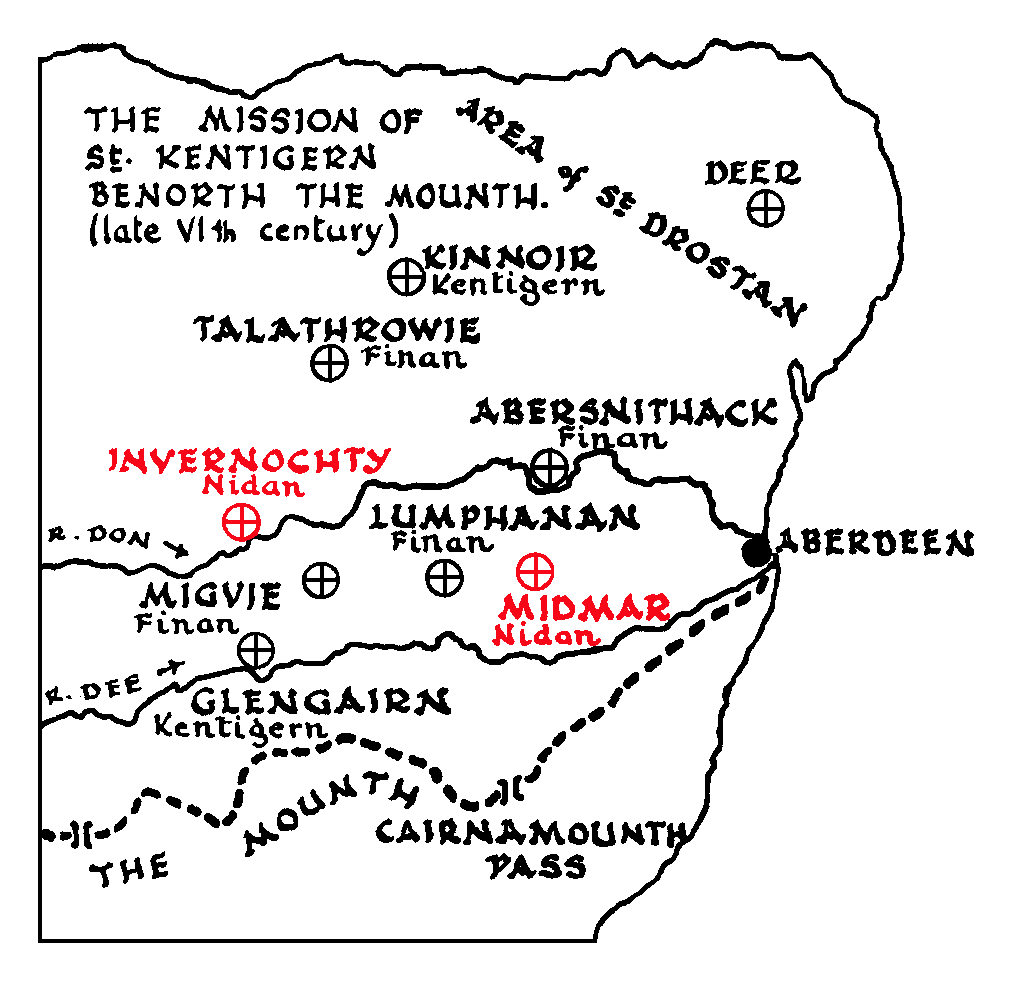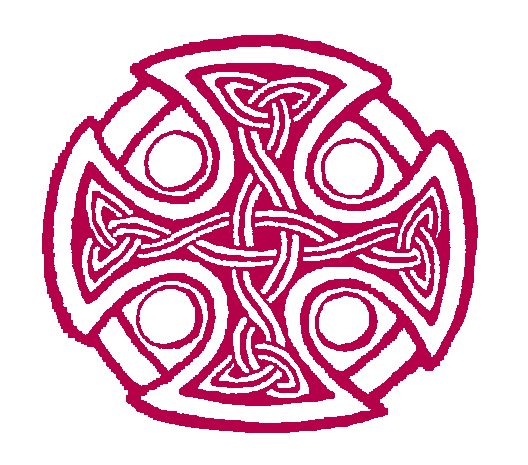One of those who accompanied Kentigern on his return from Cwymru (Wales) to Strathclyde was St Nidan and he is still remembered in Wales, having had his name attached to the parish of Llanidan on the Menai Strait in Anglesea.
Nidan was the grandson of Pasgen, son of Urien Rheged, and was thus a cousin of St Kentigern who was the son of Owain, another of Urien's sons. This might suggest that he may have been one of Mungo's companions when he journeyed to Wales to escape from the dangers which threatened his safety in the kingdom of Strathclyde. It is also said that Nidan followed his master as ab of the Andat (parent community) of Kynõr near Huntly.

{Certain of the names in the map above require "translation". Invernochty is what is now known as the village of Strathdon. Abersnithack lies a little to the north of the present-day Monymusk but we must not confuse this foundation with the much later culdee monastery at Monymusk itself.}

The two churches bearing Nidan's name, at Strathdon and Midmar, are certainly of ancient origin. Both, interestingly, lie near to, or as part of, a motte of Norman origin. There was a chapel within the walls of the Norman motte and bailey at Invernochty which is known to have served as the parish church for many years. However, the mound is known as the Doune of Invernochty - doune, from the Celtic word dun, a fort, tells us that this was a seat of power for the Picts long before the Anglo.Norman infiltration of Alba. It is entirely probable then that this dun would have been an irresistible magnet to the missionaries who came with Kentigern and who looked to found their churches at important Pictish settlements. At Midmar, the church lies a little to the east of a mound known as the Cunningar which served as the centre of administration for that part of the Pictish province of Mar known as Midmar.
.jpg) |
The medieval church of Midmar which stands over the remains of Nidan's foundation. |
Somewhat to the north of this site there is a very ancient druidic stone circle with its recumbent stone. Obviously, this was an important centre of population for the local Pictish tribes and would have been a natural focus for the missionary work of Nidan. In the same way, Nidan's colleague St Finan established a church at another of the important administration centres of the province at Migvie, from which Cromar was governed.
e-mail: admin@cushnieent.force9.co.uk
© 2005 Cushnie Enterprises